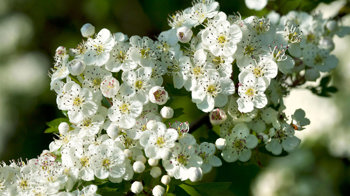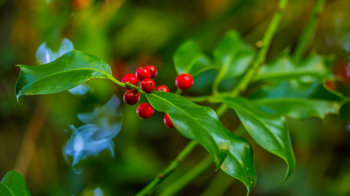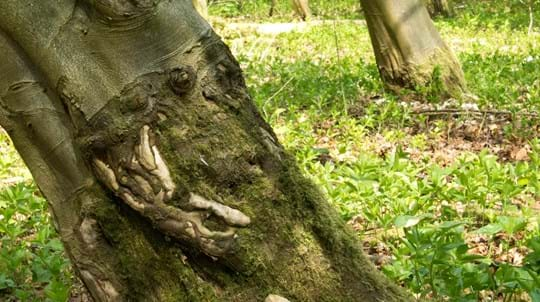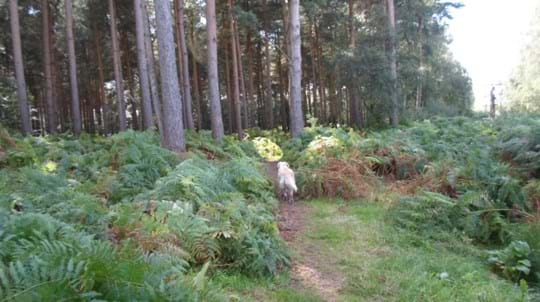
Goodhart's Wood
Bishop Wilton North Yorkshire

Woodland Trust wood
1.48 ha (3.66 acres)
SE801550
Explorer NULL
OS Landranger NULL
Nestled on a gentle northwest facing slope on the outskirts of Bishop Wilton, Goodhart’s Wood is home to standout trees and interesting pastoral history.
Goodhart’s Wood is a remnant of precious wood pasture which was generously donated to the Woodland Trust by local conservationist, James Goodhart. Look out for the ridge and furrow markings in the ground – remnants of medieval farming practices. Admire the splashes of white wild garlic and violet germander speedwell flowers that grow beneath mature hawthorns. Rest on the seat at the far end of the wood to enjoy the sweeping view across the Vale of York and beyond. Can you spot York Minster?
How to get to Goodhart's Wood
Small but perfectly formed, Goodhart's Wood covers 1.48 hectares (3.66 acres) on the outskirts of Bishop Wilton, in the East Riding of Yorkshire.
From Bishop Wilton village (located around 14 miles to the east of York), Goodhart's Wood is on the left, just as you pass through the village. Continue down Park Lane for 150 metres until you see a field gate to the wood on your right.
There isn't a car park at this wood, but parking is possible on the grass verge at the field gate.
There are no train stations near the wood. The closest stations are in Malton and York, both 24km (15 miles) from the woodland.
Visit National Rail for more information.
The 46 service from Station Road, York stops on George Street, in Pocklington, 7.4km (4.6 miles) from the wood. From here, take the 747 service to Main Street, Bishop Wilton. It's a six-minute walk to the wood, along Main Street and Park Lane.
Visit Traveline for more information.
Facilities and access
Access to Goodhart's Wood is via a pedestrian gate down Park Lane which, if approaching from the northwest, is on the left just as you pass through Bishop Wilton village. The gate is around 150 metres down Park Lane on the right.
A single circular footpath works its way through the wood. Please stick to this path as the chalky ground is prone to landslips.
There isn't a car park at Goodhart's Wood, but you can park on the grass verge at the field gate when space is available.
There are no toilets at this wood. The nearest public toilets are on Railway Street in Pocklington, including disabled access and RADAR access.
Visit the East Riding of Yorkshire Council website for more information.
Wildlife and habitats
Animals
The brilliant mix of broadleaved woodland and wood pasture at Goodhart's Wood makes it a great place to spot wildlife. Birdsong spills down from the trees and you may spot a buzzard soaring overhead.
Look out for:
Trees, plants and fungi
Mature field maple and ash trees dot the boundaries of Goodhart's Wood, while long-established hawthorns sit proudly at the top end. Elsewhere, hazel, oak, cherry and birch trees complement an understorey of holly, guelder rose and hawthorn.
Look out for wild garlic and germander speedwell peeping out from the green foliage on the floor of the site.
Look out for:
Habitats
Goodhart's Wood combines a beautiful broadleaved woodland with historic wood pasture. The wood is bordered on three sides by agricultural grazing land that includes further pockets of tree cover, one of which directly connects Goodhart's Wood to the surrounding landscape, creating a vital corridor for wildlife.
Explore:
About Goodhart's Wood
History
Goodhart's Wood has an interesting agricultural history. In 1726 it was a working wood pasture known as Remington Close, and you can still see the remnants of ridge and furrow farming in the corrugated patterns on the ground.
In 2017, the wood was donated to us by passionate local conservationist James Goodhart. In 2018, we began our initial planting, with help from a wonderful local school group. This included the wood pasture, which we enhanced with a small number of individual native trees that will thrive in the open setting.
Things to do in Goodhart's Wood
Walking
Goodhart's Wood is a wonderful place for a peaceful stroll alone, with your family or your four-legged friend. It's a real hidden gem, with relatively low footfall compared to other woods.
With such a diverse range of tree species growing here, it's the perfect chance to practice your tree ID skills while you walk. Don't forget your leaf swatch book!

Visiting woods
Walking dogs in our woods
Dogs are welcome for walkies in our woods. Take a look at our tips and guidelines for ensuring we keep our woods safe and special for dogs and wildlife.
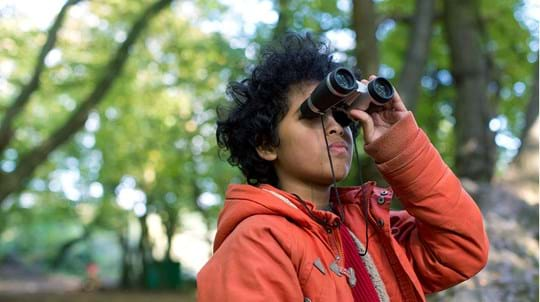
Visiting woods
Things to do in the woods
Go on an adventure. Get closer to nature. Uncover history. Discover ways to explore the UK's woods whatever the season.












